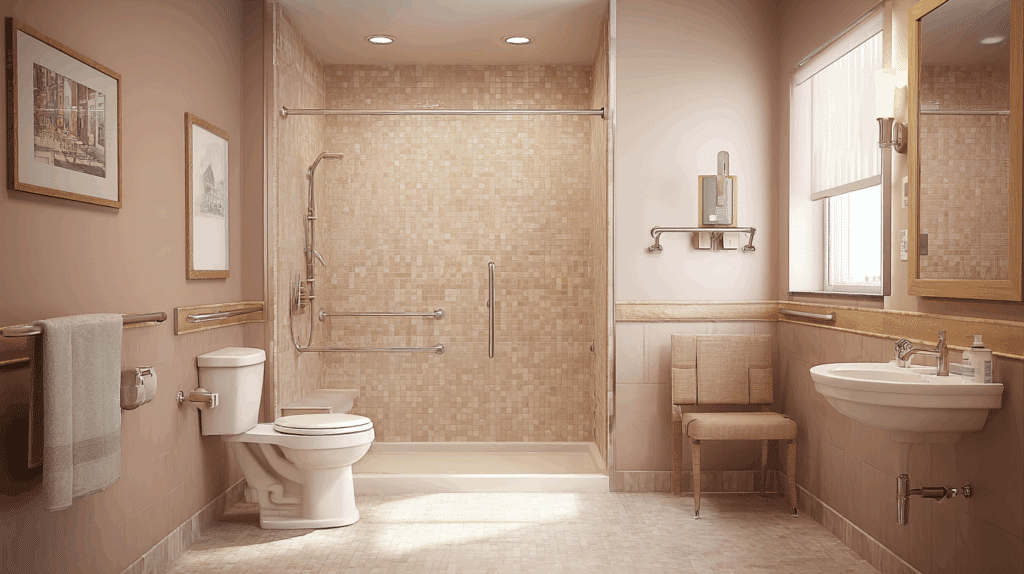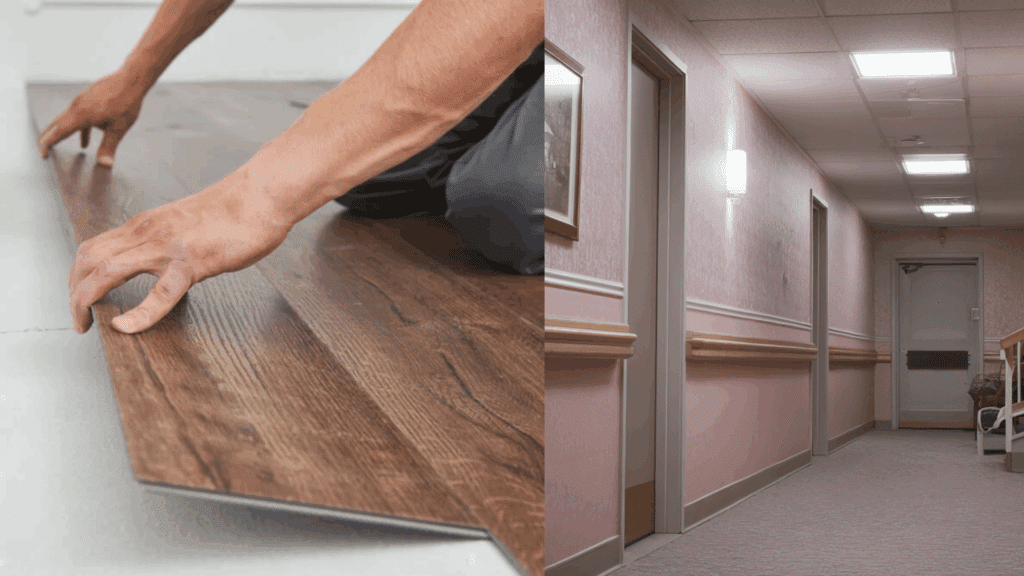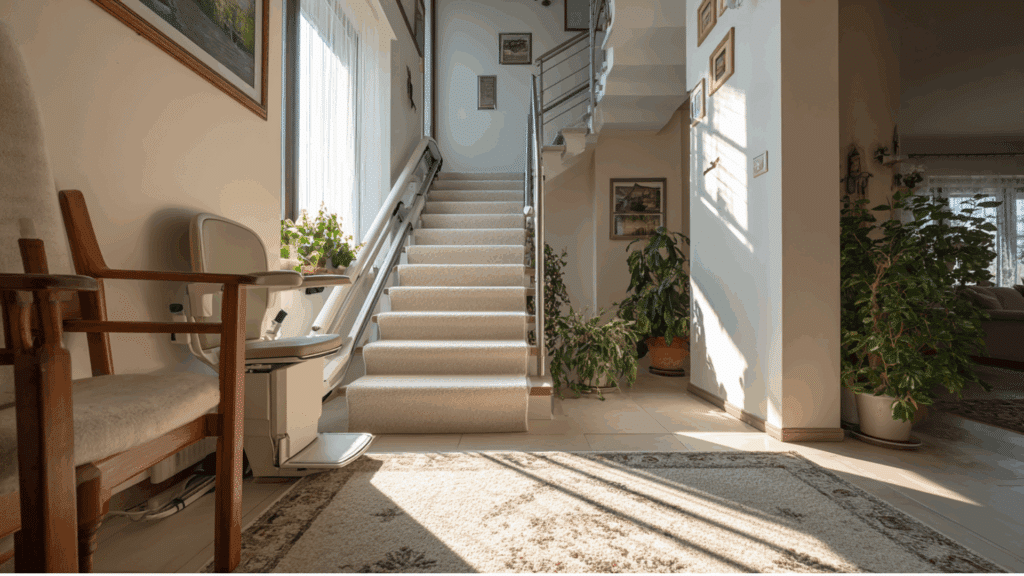When my parents first told me they wanted to stay in their house as they got older, I didn’t know where to start.
I thought about the steps at the front door, the slippery bathroom floor, and even the dim lighting in the hallway.
Like many families, I wanted them to feel safe and independent in their own home. That’s really what aging in place means: staying put while making the home work for you.
In this guide, I’ll walk through practical upgrades that can make a home safer and easier to live in as we age.
If you’re wondering what changes matter most, this guide will give you clear answers.
Why Age-Based Remodeling Matters?

As we get older, the way we use our homes changes.
Stairs that once felt easy can become tiring, and bathrooms that seemed safe may now feel risky. Simple tasks like turning a doorknob or reaching for a cabinet can suddenly feel like a challenge.
That’s why remodeling with age in mind is so important.
These changes aren’t just about safety. They’re about comfort, independence, and dignity.
A house designed for aging lets people stay in the place they know and love without constant stress. It allows for smoother movement, better lighting, and easier daily routines.
Remodeling for age means planning ahead so the home works for you now and continues to support you in the years to come.
How to Update Each Room for Aging in Place
Every part of the house can play a role in making life safer and easier as we age. Some changes are small, like swapping out handles, while others involve bigger updates, like showers or ramps.
Breaking it down room by room helps to see what’s most important and what can wait.
Bathroom

The bathroom is often the first place where safety becomes a concern.
A walk-in or curbless shower removes tripping hazards and makes bathing easier with a handheld showerhead. Grab bars that double as towel racks give stability without looking out of place.
Taller toilets and vanities with space for seating add comfort. Non-slip flooring is one of the simplest upgrades, but it makes a huge difference in preventing falls.
With just a few changes, the bathroom can feel both safe and easy to use.
Entryways and Transitions

Getting in and out of the house should never be a struggle. Adding ramps at entrances helps those using walkers or wheelchairs, while threshold strips keep floors smooth and prevent stumbles.
Widening doorways creates space for easier movement and makes the house more flexible for future needs. Lever-style handles and automatic openers remove the hassle of turning knobs or pushing heavy doors.
These changes not only improve safety but also make everyday tasks like carrying groceries inside much less stressful.
Floors and Lighting

Flooring and lighting shape how safe a home feels. Slippery floors can be replaced with materials like vinyl, cork, or rubber, which are easier to walk on.
Bright, even lighting in staircases and hallways reduces accidents, and motion-sensor lights in bedrooms and bathrooms help at night without fumbling for switches.
Using high-contrast colors on walls or flooring makes it easier to spot edges and steps. Good flooring and lighting keep the home safe while making it easier to see and move around.
Hardware and Fixtures

Simple upgrades in hardware can change daily routines for the better. Lever handles are easier to push down than knobs, especially for hands with arthritis.
Touchless faucets reduce strain from twisting and also help with cleanliness. Rocker switches take the place of small flip switches, making lights easier to turn on or off.
Smart locks and thermostats, controlled by a phone or remote, give peace of mind and convenience.
These changes are small but create big improvements in comfort and independence.
Mobility and Safety Aids

For multi-story homes, stairlifts make a huge difference by keeping the upper floors accessible. Ceiling lifts or transfer aids support those with limited mobility, easing both the person’s and the caregiver’s strain.
Smart safety tools like fall alert systems, sensors, and medication reminders help families feel more connected and secure. These aids go beyond comfort, as they directly protect health and safety.
Adding them ensures that a person can stay in their home longer, even if their physical abilities change over time.
Other Functional Upgrades to Consider

Some upgrades may seem small, but they add up in daily life. Anti-scald devices protect against burns in showers and sinks. Easy-to-use HVAC controls help keep the home at a comfortable temperature without frustration.
Outdoor lighting along walkways, porches, and steps makes coming and going safer, especially in the evenings. These improvements don’t require major remodeling but add a sense of safety and ease.
Together, they help create a home environment that works with aging, not against it.
Making these room-by-room changes turns a regular house into a place that feels safe and easy to live in. Each upgrade adds comfort and helps the home keep up with changing needs over time.
Avoiding Common Pitfalls of Remodelling
Not every upgrade ends up being helpful. Some sound great on paper but aren’t practical or cost-effective in real life. Thinking ahead about what will truly make a difference helps avoid wasted time and money.
- Elevators: A stairlift is often enough. Full elevators are expensive and usually unnecessary unless wheelchair use is expected long-term.
- Walk-in tubs: Check water heater capacity. These tubs need lots of hot water, and many homes can’t keep up.
- Flooring transitions: Keep them level. Small bumps between rooms can turn into major tripping hazards.
- Over-remodeling: Don’t do it all at once. Too many projects at the same time can make parts of the home unusable.
- Extra features: Add them later if needed. Focus on essentials first and leave non-urgent upgrades for the future.
By starting with true needs and leaving the extras for later, you can keep remodeling manageable and effective.
Practical Budgeting Tips for Remodeling
Planning ahead for remodeling makes the process less stressful and more affordable. Starting early gives time to compare costs, line up the right professionals, and decide which changes matter most. A clear plan also helps avoid overspending or rushing into choices you may not need.
Budgeting Tips
- Make a room-by-room list of upgrades in order of priority.
- Compare the cost of remodeling with the long-term cost of assisted living.
- Build in 10–20% extra to cover unexpected expenses.
- Decide which smaller projects can be done DIY and which require a professional.
- Track spending closely to stay within your set budget.
Financing Options
- Use a home equity line of credit for larger remodeling projects.
- Consider a cash-out refinance to cover bigger upgrades.
- Explore personal or renovation loans with manageable terms.
- Look into local or state programs that provide financial aid for accessibility.
- Check if grants are available for seniors, veterans, or people with disabilities.
Having a plan and a budget in place makes the remodeling process smoother. It ensures upgrades are affordable and targeted, so the home feels safe and comfortable without unnecessary financial stress.
How to Find the Right Help?
Not every contractor has the skills to handle aging-in-place remodeling. That’s why it’s best to look for professionals who are Certified Aging-in-Place Specialists (CAPS).
They are trained to design and remodel homes with accessibility in mind, making sure safety and comfort come first.
There are also organizations that can point you in the right direction.
Area Agencies on Aging, the National Aging in Place Council, and eldercare locators are all reliable starting points. Veterans may qualify for VA Aid and Attendance benefits to help with costs.
Before hiring, always ask for references and check past projects. A good specialist will explain your options clearly and focus on what you really need, instead of pushing the most expensive upgrades.
Key Factors Beyond Home Remodeling
Making a home safer through remodeling is important, but it’s not the only factor in successful aging in place. Support systems and lifestyle planning also play a big role in helping someone stay independent for longer.
- Caregiver support: Plan ahead for in-home care, no matter if it’s part-time or full-time.
- Health care access: Consider how close the home is to doctors, hospitals, and emergency services.
- Social connections: Create spaces that make it easy for family and friends to visit.
- Long-term planning: Think about how future changes in mobility or health will affect daily living.
Together, these elements work alongside physical upgrades to create a complete plan for safe, independent living.
Quick Tips for Successful Remodeling
Taking on an aging-in-place remodel can feel overwhelming, but a few simple steps can make the process smoother. These tips focus on planning smart, choosing wisely, and making changes that last.
- Start small with high-impact upgrades like grab bars and brighter lighting before moving to larger projects.
- Involve family members in decisions so everyone feels supported and prepared.
- Test products in person when possible to make sure they’re easy to use.
- Keep future needs in mind, even if they aren’t urgent right now.
- Choose materials and designs that balance safety with comfort and style.
By following these tips, you can make steady progress and create a home that feels safe, welcoming, and ready for years to come.\
Conclusion
Aging in place remodeling is really about creating a home that grows with us.
It’s about making spaces safer, easier to use, and more comfortable so we can stay independent longer. Simple changes like grab bars in the bathroom or brighter lighting in the hallway can make everyday life feel less stressful.
This guide has walked through practical ideas that cover safety, design, and planning.
The goal is not just to remodel but to prepare the home so it continues to support you or your loved ones as needs change.
If you came here looking for answers, I hope you now feel clear on what steps to take.
With smart planning, budgeting, and the right help, you can make confident choices for aging in place.

